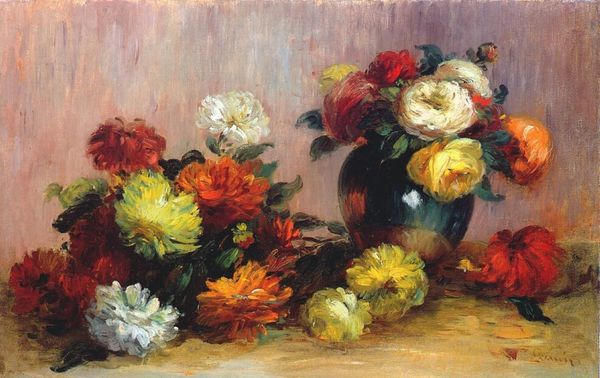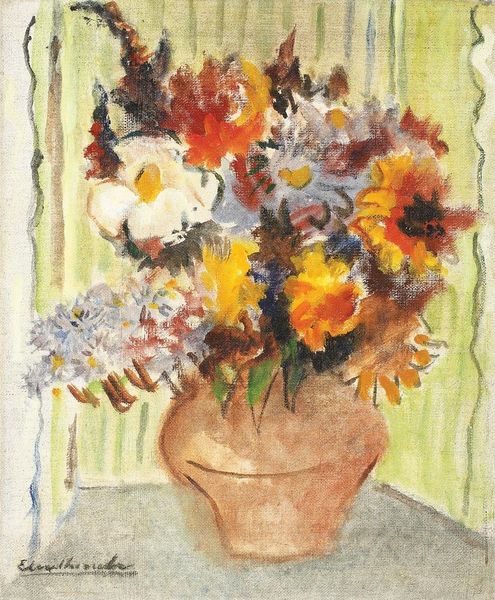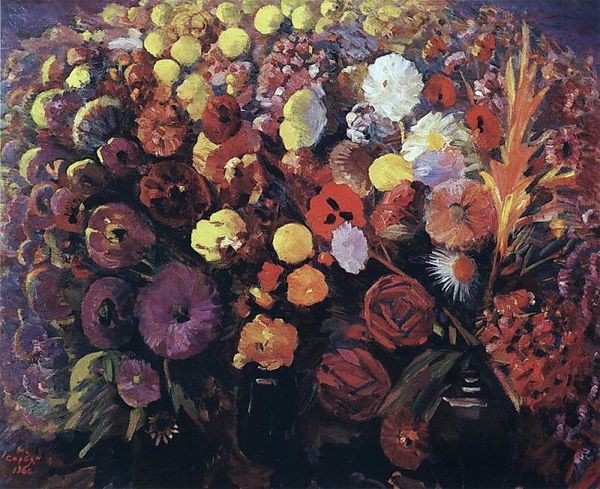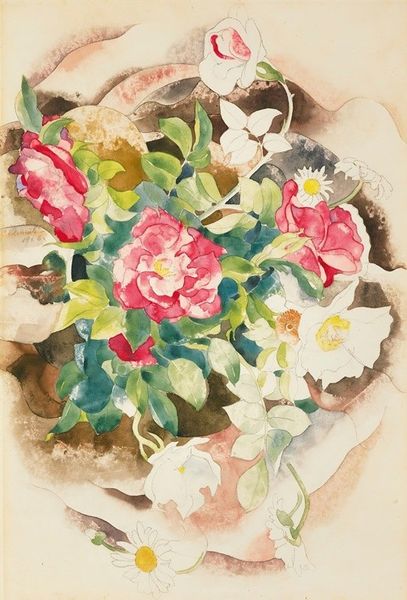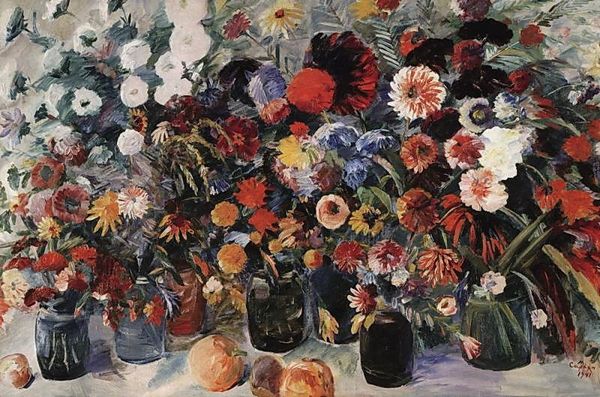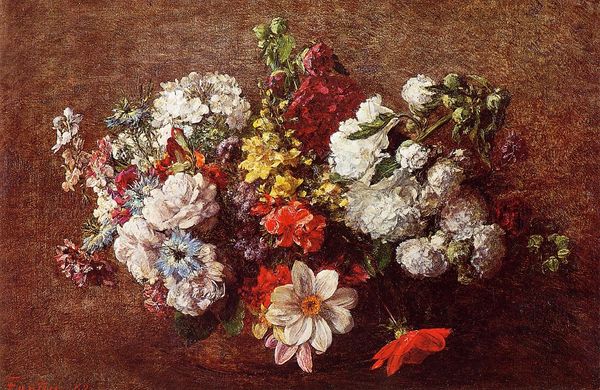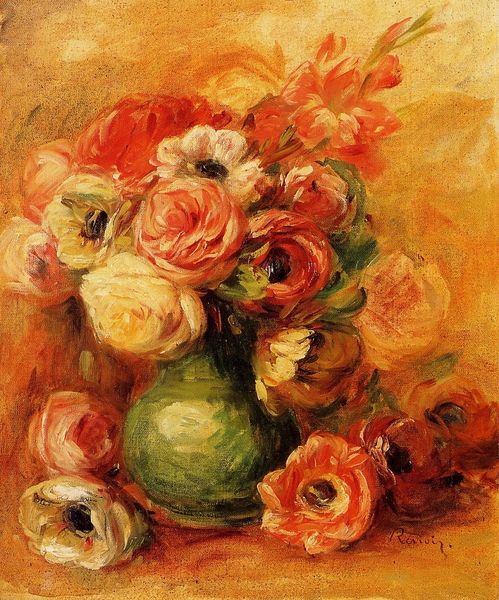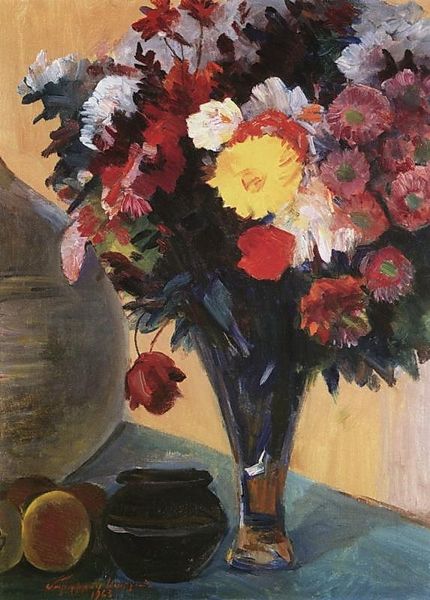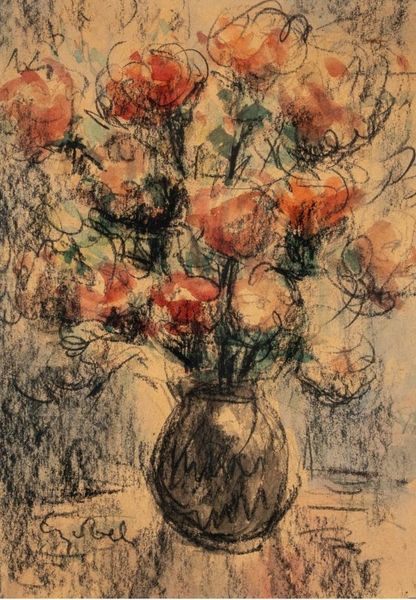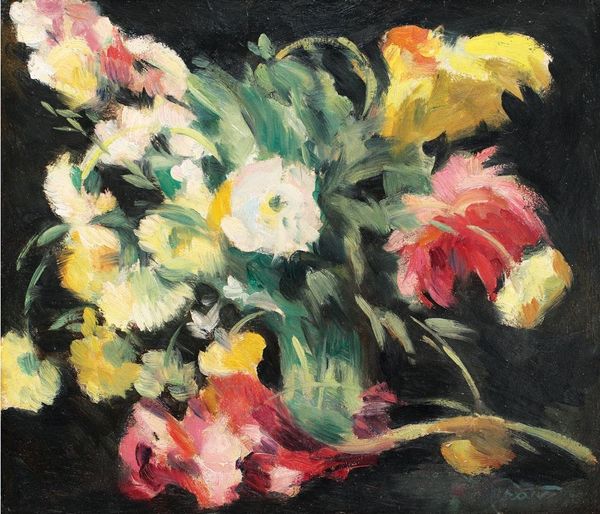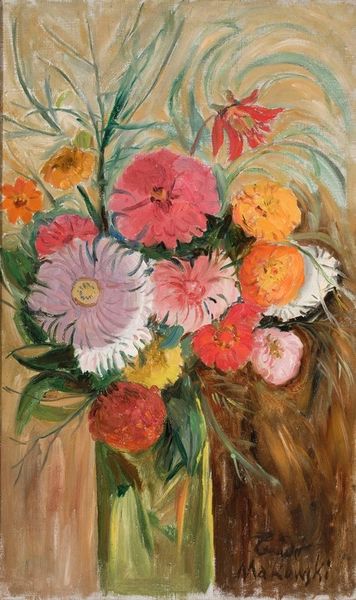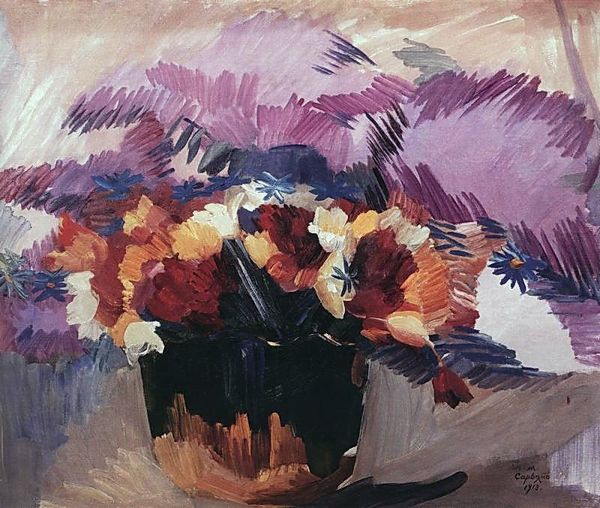
Dimensions: 21.3 x 27.1 cm
Copyright: Public domain
Curator: Here we have Eugène Delacroix's "Bouquet of Flowers," painted in 1843, a stunning watercolor currently residing at the Musée Fabre in Montpellier. Editor: It feels almost like a sketch, an exercise in capturing light rather than a finished still life. The rapid, translucent brushstrokes give it an ephemeral quality. Curator: Exactly. Delacroix, often celebrated for his large history paintings, demonstrates his mastery even on a smaller scale. Think about the social and political context: the rise of the bourgeoisie and their embrace of domestic intimacy and the natural world. This intimate glimpse of flowers could represent those shifting cultural values. Editor: I am also interested in its technical aspects. Notice how he’s built the bouquet from patches of color rather than meticulously outlining each bloom. Look at how much he suggests the flowers rather than overtly defining them. Curator: And the contrast between the structured, almost classical, arrangement of the bouquet and the loose, romantic brushwork? It speaks to Delacroix’s complex relationship with tradition and innovation, mirroring similar tensions in society itself during the time. Editor: The way watercolor behaves on paper lends itself well to this transient mood. It also reminds us that Delacroix must have been working quickly here, and this shows not only the artist's intent, but the social valorization of such loose sketching. It captures the spirit of the era and its emergent material practices. Curator: In terms of composition, there is this strong foreground focus; it centers beauty in an intentional way, yet in terms of broader art histories it subverts traditional themes like war and religion to focus on more immediate and available beauty. The choice to make something this delicate elevates the everyday and personal. Editor: Seeing how he handles the watery pigment offers clues to how painters can find ways to challenge established traditions. Curator: This close look reminds us that even in something as seemingly straightforward as a floral still life, there’s a world of meaning to be uncovered, related to culture, politics, and power. Editor: Ultimately, “Bouquet of Flowers” demonstrates the endless possibilities afforded by modest materials when coupled with the intent of the maker and the shifting winds of their surrounding cultural currents.
Comments
No comments
Be the first to comment and join the conversation on the ultimate creative platform.

